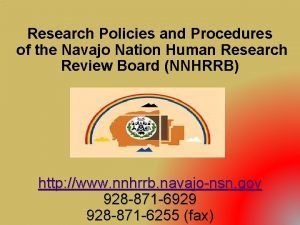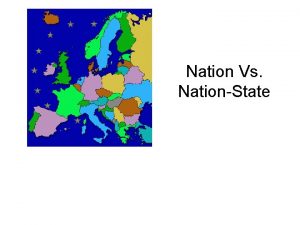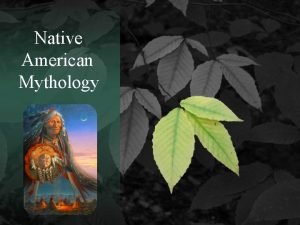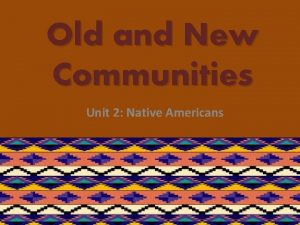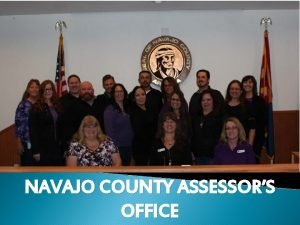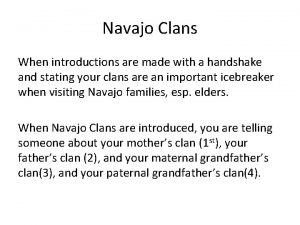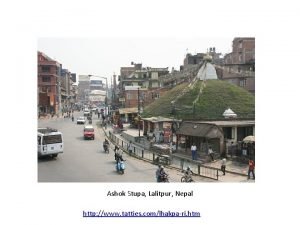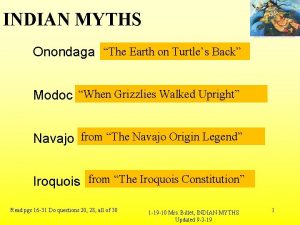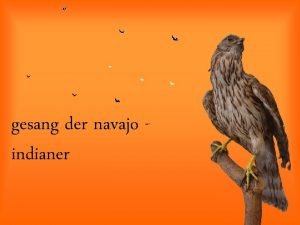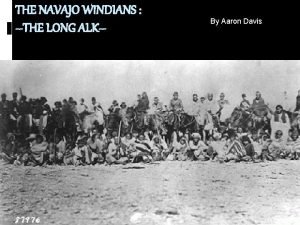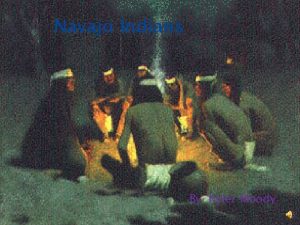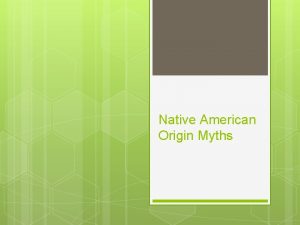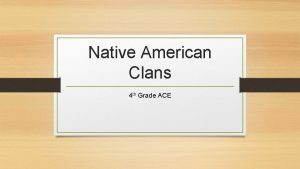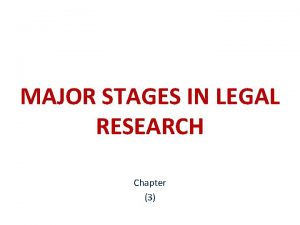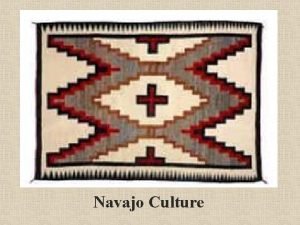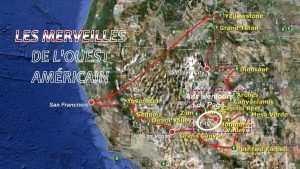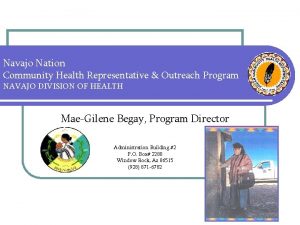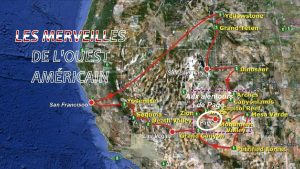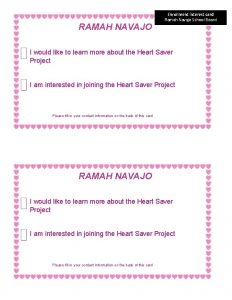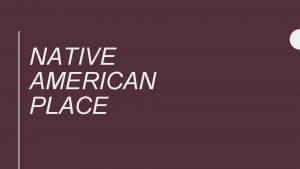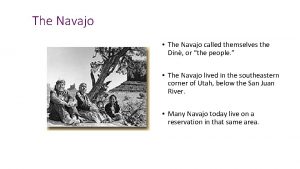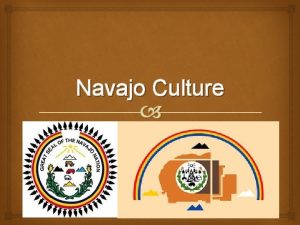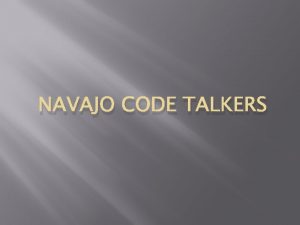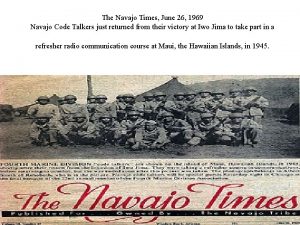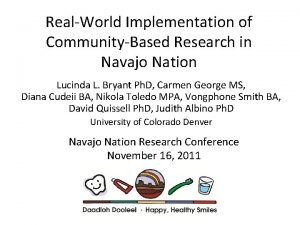Research Policies Processes and Protocol The Navajo Nation























- Slides: 23

Research Policies, Processes and Protocol The Navajo Nation Human Research Review Board (NNHRRB) http: //www. nndoh. org 928 -871 -6929 928 -871 -6255 (fax)

The Navajo Nation extends into the states of Utah , Arizona and New Mexico, covering over 27, 000 square miles of unparalleled beauty. Diné Bikéyah, or Navajo land, is larger than 10 of the 50 states in America. Today, the Navajo Nation is striving to sustain a viable economy for an ever increasing population that now surpasses 250, 000. In years past, Navajo land often appeared to be little more than a desolate section of the Southwest, but it was only a matter of time before the Navajo Nation became known as a wealthy nation in a world of its own.

Navajo Nation Government � The discovery of oil on Navajo land in the early 1920's promoted the need for a more systematic form of government. � Critical issues and enact legislation to determine the future of the Navajo people. Reorganized in 1991 to form a three-branch system - Executive - Legislative - Judicial � The Navajos conduct what is considered to be the most sophisticated form of Indian government. In 1923, a tribal government was established to help meet the increasing desires of American oil companies to lease Navajo land for exploration. Navajo government has evolved into the largest and most sophisticated form of American Indian government. Currently The Navajo Nation Council Chambers hosts 24 (formerly 88 ) council delegates representing 110 Navajo Nation chapters. While the Council is in session, you'll likely hear delegates carry on the tradition of speaking in Navajo, providing a perfect example of how the Navajo Nation retains its valuable cultural heritage while forging ahead with modern progress. When the Council is not in session, legislative work is done by 5 standing committees (formerly (12) of the Council. Inside the circular Council Chambers, the walls are adorned with colorful murals that depict the history of the Navajo people and the Navajo way of life.

Navajo Nation Human Research Review Board Governing Body Office of Navajo Nation President and Vice-President • Russell Begaye, President • Jonathan Nez, Vice-President Navajo Nation Council • Lorenzo Bates, Speaker, 23 rd Navajo Nation Council Health, Education and Human Services Committee • Jonathan Hale, Committee Chairperson Navajo Area Indian Health Services • Dr. Doug Peters, Acting Director

NAVAJO NATION HUMAN RESEARCH REVIEW BOARD “INDIGENOUS PEOPLE AND RESEARCHERS: BUILDING COLLABORATIVE PARTNERSHIPS AND THE IMPORTANCE OF RESPONSIBILITIES, ETHICS, AND VALUES OF RESEARCH ON THE NAVAJO NATION”

NAVAJO NATION HUMAN RESEARCH REVIEW BOARD MEMBERS Beverly Becenti-Pigman, Chairperson Dr. Raymond Reid, M. D. Rebecca Izzo, MPH, Ph. D. (C) Ursula Knoki-Wilson, MSN, MPH Dr. David Begay, Ph. D. Dr. Mark C. Bauer, Ph. D. Wallace Mc. Gilbert. Community Member Dr. Kalvin White, Ph. D. Mike Winney, IRB Coordinator MISSION STATEMENT The mission of the Navajo Nation Research Program is to support research that promotes and enhances the interests and the visions of the Navajo people; to encourage a mutual and beneficial partnership between the Navajo people and Researchers; and to create an interface where difference cultures, lifestyles, disciplines, and ideologies can come together in a way that improves, promotes, and strengthens the health of the Navajo people.

Presentation Objectives � History and Development of the Navajo Nation Human Research Review Board � Research Protocol Application Process � Navajo Nation Standards of Approval � Stages in the review and approval process � 12 -phase NNHRRB review and approval process

I. Introduction � Following is description of NNHRRB policies & procedures � Developed in 1996 and revised in 2002, due to increased requests � Tribal research policies & protocols derived from ethical principles and legal protections inherent in rights of indigenous nations

2. History & Development of the Navajo Nation Human Research Review Board • • Navajo people possessed indigenous knowledge & science for over 1000 years Most researchers are non-Indians NNHRRB ASSETS / STRENGTHS � NNHRRB meetings are held monthly and on a consistent basis. Dedicated group of skilled committee members. � NNHRRB has National and International reputation as a leader of tribal IRBs. � Has established relationship with academic institutions such as Johns Hopkins, U of A, UNM, U of Utah, ASU, NAU, Diné College, NTU, etc. � Hold bi-annual NNIRB Research Conference in Window Rock in order to share research findings with all.

1987 “Belmont Report” � Prompts IHS to establish IRB committee � In 1979 IHS forms NAIHS IRB Navajo Nation responds through self-governance � In 1992, the Navajo Nation operationalized the NAIHS IRB; � 1995: Navajo Nation Council enacts Navajo Nation Health Research Code CO-106 -95 � 1996: NNHRRB began reviewing study proposals � 2002: Navajo Nation Council expanded NNHRRB authority by adopting resolution IGRJN-86 -02 to review, monitor & approve research

15 NNHRRB Members � � � 3 persons appointed by the Navajo Area Health Board 3 persons appointed by the Office of the Navajo Nation President 3 persons appointed by the Navajo Nation Council Health and Social Services Committee 3 persons appointed by the Navajo Nation Council Education Committee 3 persons appointed by the Navajo Area Indian Health Services Director

Enabling Legislative The Navajo Nation Human Research Review Board was developed in 1996 to guarantee ethical research for the Dine´ People. Purpose: The purpose of this Code shall be to set forth the conditions under which investigators, physicians, researcher and other may perform heath and health related research activities within the territorial jurisdiction of the Navajo Nation; Policy: It is the policy for the Navajo Nation to ensure that all persons within the territorial jurisdiction of the Navajo Nation are free from unreasonably harmful, intrusive illconceived or otherwise offensive research and investigation procedures.



Research Protocol Application Process PI submits application to NNHRRB two months prior to in-person presentation Application must include the following: 1. CEO support letters from NAIHS Service Units & NN Program Directors 2. permission from affected NN offices/agencies 3. study-specific documents 4. detailed budget 5. two approving resolutions from agency councils, chapters or IHS units

Navajo Nation Standards of Approval � Community involvement � Benefits to the Navajo Nation � Authority of the Navajo Nation � Research project description � Informed consent form � Certification by the Principal Investigator

Twelve-phase NNHRRB review and approval process � Phases I – III Involvement & Participation I Community Partnership II Tribal Program Partnership III Screening of Research Application � Phase IV Meeting and Presentation IV NNHRRB Decision-making phase Approve Amend Disapprove

Phases V – VII During phase V, if research is approved in Phase IV the PI within 30 days will receive a one year annually renewable research permit. (Quarterly and annual progress reports are required) l Involvement & Participation Phases V Study implementation VI Data analysis & preliminary findings VII l Data work session Phases VIII – XI Dissemination phases VIII Final report & Dissemination plan IX Transfer of Data to the Navajo Nation X Manuscript publication XI Community feedback & presentations PI will present research results to Chapters, Schools, Health Boards and relevant tribal programs)

l Phase XII Data transfer phase XII Final transfer of data to the Navajo Nation (At the end of the Research Project, all data shall be given to the Navajo Nation Data Resource Center. (Intellectual & Cultural Property owned by the Navajo Nation )




Thank You Any questions contact: Ms. Beverly Becenti-Pigman, Chair Navajo Nation Human Research Review Board bbp_pqih@yahoo. com (928) 697 -2525 Mike Winney, IRB Coordinator Navajo Department of Health michael. winney@nndoh. org Tele: (928) 871 -6929 Fax: (928) 871 -6255
 Navajo irb
Navajo irb Navajo nation human research review board
Navajo nation human research review board Navajo nation breastfeeding coalition
Navajo nation breastfeeding coalition Navajo nation grazing permit laws
Navajo nation grazing permit laws Country vs nation
Country vs nation State vs nation
State vs nation Theories of origin of state
Theories of origin of state Concurrent in os
Concurrent in os Tklehanoai
Tklehanoai What did navajo eat
What did navajo eat Navajo county gis
Navajo county gis Navajo clans
Navajo clans Ashok stupa lalitpur
Ashok stupa lalitpur Identify the stages of the navajo creation ceremony
Identify the stages of the navajo creation ceremony Weisheit der navajo
Weisheit der navajo Cheating navajo
Cheating navajo What did the navajo eat
What did the navajo eat Navaho origin legend
Navaho origin legend Navajo clan worksheet
Navajo clan worksheet Respite care navajo
Respite care navajo Antelope canyon navajo tribal park
Antelope canyon navajo tribal park 3 processes of a research
3 processes of a research Security program and policies principles and practices
Security program and policies principles and practices Recruitment selection and induction policies and procedures
Recruitment selection and induction policies and procedures
